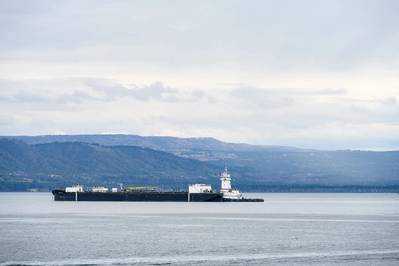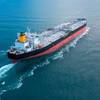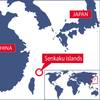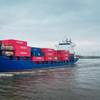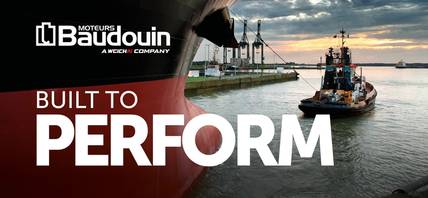Looking Beyond Maritime’s “Moment”
It’s been said that American maritime is “having a moment” in Washington, DC.
From President Trump’s Executive Order on Restoring America’s Maritime Dominance, to introduction of the bipartisan, bicameral SHIPS for America Act in Congress, the U.S. maritime industry has been a subject of focused attention at the highest levels of government, and rightfully so. At their core, these initiatives are driven by recognition that a strong maritime industry is not only vital to the American economy, but also fundamental to our national security, particularly as China continues its rapid maritime expansion to further its own geopolitical ambitions.
Add to that the Trump administration’s goal of unleashing the American economy by streamlining regulatory burdens, and it all adds up to a real convergence of opportunity for the domestic maritime industry.
In this environment – as the tugboat, towboat and barge industry’s advocate, resource, and united voice for safe, sustainable and efficient transportation on America’s waterways, oceans and coasts – AWO is working hard to ensure that our nation’s reinvigorated commitment to a robust American maritime industry endures beyond a single “moment,” and is not limited to what happens in DC. We need to translate this renewed focus into tangible action that will strengthen our industry and enable us to continue advancing vital national interests for generations to come.
That starts with continuing to fortify and expand longstanding, bipartisan support for the Jones Act, the statutory foundation of American maritime. At a time when policymakers are able to agree on precious little else, today’s widespread support for the Jones Act reflects commonsense understanding of its importance to our national security, economic resilience, safety and environmental quality. But, the law’s perennial critics – from the opportunistic to the uninformed – are persistent, and we can’t afford to be complacent.
At the federal level, we need to build on that foundation by promoting policies and investments that enhance safety, efficiency and innovation – by working with the Coast Guard to ensure a practical and consistent approach to Subchapter M enforcement; securing timely issuance of Coast Guard regulations implementing the Vessel Incidental Discharge Act to replace the unworkable patchwork of federal and state regulation that has plagued our industry for two decades; advancing legislation that ensures engine room watchstanding standards keep pace with technological innovations onboard ATBs; protecting navigational safety through policies that keep commerce moving safely through low and high water on the Mississippi River, fund modernization of waterways infrastructure, prevent dam breaching on the Columbia-Snake River, and establish safe navigation fairways on the Atlantic and Pacific coasts; and much more.
We must also take our advocacy to the states, where policymaking can be equally consequential to the safe and efficient movement of maritime commerce. In California, an industry coalition recently convinced the state to drop a draconian Indirect Source Rule that could have shut down our nation’s busiest ports in favor of a cooperative agreement between the ports and state regulators, but we must continue to work with the California Air Resources Board to implement its Commercial Harbor Craft rule in ways that protect mariner safety and embrace practicable timelines for compliance.
Whether we are working to ensure sensible emissions frameworks in California, educating legislators in Illinois and Missouri on the impact of mandatory paid leave requirements on vessel operations, opposing excessive operational taxes in Washington state, or building on our successes in countering anti-Jones Act resolutions in Alaska and New Hampshire, effective advocacy in state capitals is critical to creating the conditions for the continued safety and efficiency of maritime commerce.
Translating a maritime “moment” into a strong and enduring future also means continuously improving our performance as the indispensable national asset we are, especially by building on our unmatched record as America’s safest mode of freight transportation. The Coast Guard-AWO Quality Partnership – at 30 years and counting, the Coast Guard’s oldest public-private partnership – has been the cornerstone of this effort, with the partnership’s most recent Annual Safety Report showing continuing positive trends in driving down fatalities (at 4.2 per 100,000 full-time employees in 2024, well below the rate for all transportation workers) and oil pollution (.25 gallons per million gallons of cargo transported by tank barge in 2024, with 92% of the total volume traceable to just two incidents).
Improvements like these don’t just happen – they are the result of a strong safety culture across our industry, and forward-thinking leadership in addressing both longstanding and emerging safety risks. That is why AWO’s latest efforts to prevent falls overboard through our Falls Overboard Prevention Report; collaborate with the National Safe Boating Council to educate recreational boaters on safe navigation near commercial vessels; address moveable bridge hazards through our Bridge Event Reporting program; and other initiatives are critical to continued progress toward zero harm.
If American maritime is to continue to thrive beyond any given “moment,” we must also attract, retain and grow the industry’s future workforce to meet growing demand for marine transportation. There is no single solution to this challenge, but it certainly requires modernizing the Coast Guard’s mariner credentialing process, so we don’t lose mariners to frustration with long bureaucratic delays; cultivating partnerships between our industry, federal and state maritime academies and educational and training institutions around the country; and finding innovative, engaging ways to tell our industry’s compelling story to the next generation of mariners.
That American maritime story is more than a moment – it’s a central pillar of our nation’s past, present, and future prosperity and security. Working together, the American maritime community must seize today’s opportunities to build the industry that our country needs for a strong tomorrow.




